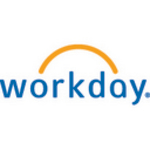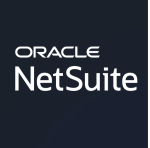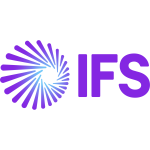What is our primary use case?
I have been working on the technical side of PeopleSoft for the past nine months, focusing mainly on technical courses such as REST APIs, PeopleCode, application packages, and uploading data to pages and component interfaces. I have also been involved in data conversion during my trial dates.
How has it helped my organization?
In our organization, there are over 100 clients that use the PeopleSoft application. We support all the tools and handle implementation needs such as enhancements. For example, if a client has a specific requirement, we will work on enhancing or customizing the PeopleSoft system to fulfill it. The usage of PeopleSoft in organizations varies based on their specific needs and requirements. Most organizations are currently focused on upgrading or enhancing their existing systems, and the need for enhancements varies depending on the organization's particular requirements. For instance, some organizations may need additional transactions or functionality, which requires an add-on to the system.
However, once the system is up and running, high-level maintenance is required, such as setting up department structures or defining organizational structures. It requires a higher level of expertise. Therefore, the increase in further usage depends on all these factors.
In terms of delivering functionality, we provide end-to-end solutions for any additional items or transactions the organization requires. For instance, I recently developed a help desk service for a small bank, which is an add-on. All companies have specific needs and requirements, and if they require additional functionality or an add-on to their system, it is necessary to analyze and design the system accordingly.
What is most valuable?
As a technical developer, the technical support features are the most valuable. Specifically, I work with the application engine, component interface, XL to CI tools, REST APIs, activity guides, and the event mapping framework. These tools allow me to handle day-to-day technical support tasks, such as fixing issues with existing pages and resolving technical issues that arise. Additionally, I use these tools to implement new enhancements and deliver end-to-end solutions for my clients.
What needs improvement?
I would like to see a chatbot in PeopleSoft as part of artificial intelligence. Moreover, there are already a few things in the cloud. In the market, all companies and entities are moving to the cloud, whether it is Oracle cloud or AWS cloud. The cloud is the most secure platform where we can also have Fusion. Few companies have migrated from PeopleSoft to Fusion or Oracle Cloud, or AWS cloud based on their organization's requirements. Some organizations are moving from PeopleSoft to upgrade their tools or application versions, while others are moving from PeopleSoft to HCM Cloud if they are into HCM. The cost of the product depends on the enterprise's size, and some enterprises are moving in quantity due to the current market.
Additional areas that need improvement are the add-ons to the fluid pages and additional features in SCM and finance, both functionally and technically.
Buyer's Guide
PeopleSoft
September 2025
Learn what your peers think about PeopleSoft. Get advice and tips from experienced pros sharing their opinions. Updated: September 2025.
868,787 professionals have used our research since 2012.
For how long have I used the solution?
I have about 15+ years of experience working with PeopleSoft. My primary focus is technical work. I have worked with version 7.21.02, and recently, I have been working with version 8.59. In addition, I have experience working with application version 7.52 and the recent version 9.2. I have also worked with FSCM for around nine years and have around six-plus years of experience working with SCM. In total, I have around 16 years of experience working with it.
What do I think about the stability of the solution?
In terms of stability, I would rate PeopleSoft 7 out of 10. There are some issues that need to be addressed, but overall, it's a stable system.
What do I think about the scalability of the solution?
I would rate scalability a nine out of ten.
How was the initial setup?
The setup is related to the admin role. I can install the solution but not get into the admin role. However, from a technical point of view, integrating PeopleSoft is not complex, as I have been working with PeopleSoft for over fifteen years. We can integrate PeopleSoft with third-party systems.
As for the current market, most companies use the REST API in PeopleSoft, which supports all kinds of applications such as XML, Java, JSON, plain text, or HTML. It is why REST API is widely used in mapping with mobile applications and third-party systems. However, some organizations still use SOAP for security reasons, as SOAP supports SSL for secure transactions like banking.
What about the implementation team?
The time to deploy the solution depends on the specific requirements for each transaction. We would create a roadmap based on the functional logic needed for that transaction.
Generally, we follow the analysis, design, development, deployment, and maintenance steps. After deployment, there is a testing phase where we perform black box testing. Most organizations use the agile methodology for individual development, but each organization has its own template and rules for how the process should be carried out. In terms of documentation, several documents are mandatory, including the Functional Design Document (FDD), Technical Design Document (TDD), Unit Test Document (UPD), and migration document.
What's my experience with pricing, setup cost, and licensing?
We have 108 clients, and they are using it in a shared service model in the cloud. We provide space based on the number of images, instances, and users, and billing takes place accordingly. It is implemented as part of a shared services model in our organization. Before this, when it was used locally, the product cost was fixed.
Which other solutions did I evaluate?
Our company has other ERP options, such as Oracle Fusion and Oracle SCM cloud. In my previous organization, I also worked with Kronos, a famous ERP for time and shift management. In the market, there are several other ERPs available. For data conversion, I worked with a few industries and converted data from PeopleSoft to Banner and Workday. My role mainly involved data migration from PeopleSoft to other ERPs.
What other advice do I have?
PeopleSoft is one of the oldest systems and applications and is still competitive, especially in the area of ERP. In the market, we have around forty-two percent cohort globally.
Similarly, we have various ERP systems with specializations, like SAP, for material management, sales order management, and other related activities. Similarly, the finance system in Oracle is the best ERP for finance (FACM). Whereas PeopleSoft is famous for SCM, Human Capital Management (HCM), and Enterprise Learning Management (ELM), and their CRM system is also very good in the market. Although Oracle has moved to HCM, PeopleSoft will still be there. Because PeopleSoft has finance, SCM, and CRM, if an organization has PeopleSoft, they can use all three according to their requirements.
All ERP activities are available in PeopleSoft, including EPM, which provides parts management, and PeopleSoft ELM for enterprise learning management. PeopleSoft FSCM provides for order management, SCM, human capital management, and CRM, making it a comprehensive ERP system compared to others.
Overall, I would rate PeopleSoft a seven out of ten.
If public cloud, private cloud, or hybrid cloud, which cloud provider do you use?
Amazon Web Services (AWS)
Disclosure: My company does not have a business relationship with this vendor other than being a customer.

















